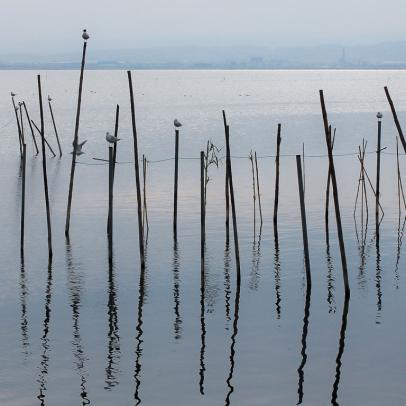The Natural Park of La Albufera de Valencia is an unending plain over 25km long, occupied by a large freshwater lagoon with an area of 24 square kilometres (the largest in the Iberian Peninsula), surrounded by wetlands where rice is grown. The lagoon is separated from the sea by a narrow strip of land covered by pine woods and dunes, followed by very attractive beaches that have largely avoided the relentless process of building on the Spanish coast.
It is a very complex ecosystem, to a great extent shaped by humans who since ancient times have attempted to turn these wetlands into agricultural land by building canals with sluice gates to control the water level in the lagoon, as well as an extensive network of channels with pumps to enable the filling and draining of the rice fields. The water in the lagoon provides shelter for countless birds, such as mallards, red-crested pochards, herons, European ibis and flamingos, which are relatively common in the rice fields.
- Access by car: the proposed place to visit is on the trekking and MTB routes of the Way of El Cid, between Silla and El Romaní. It can also be reached by car from El Romaní, on a tarmac track on the other side of the railway line.
- Access for people with limited mobility: there are no infrastructures adapted for people with limited mobility. However, near El Palomar, at the other end of La Albufera, it is prepared for visits.
- Legal protection: it forms part of the Natural Park of La Albufera, as well as the Natura 2000 Site of Community Importance and Special Protection Area called La Albufera.
- Seasonality: the scenery around La Albufera de Valencia changes during the year in accordance with the calendar that marks rice-growing. Although this takes five or six months, work goes on all year preparing, filling and emptying the fields. The inhabitants of La Albufera call the winter flooding of the fields in late November the Perellonà.
- Recommendations, what to see and do: it is interesting to go up to the road bridge over the railway line as it provides a higher viewpoint and a fuller picture of the rice-fields and La Albufera. From there, a footpath leads off from the crossroads towards the north-east and leads to the shore of La Albufera in less than 500m on foot.
Rev.: PAB 10.05.23


